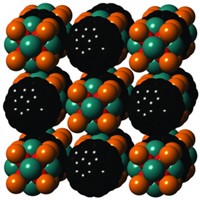Advertisement
Grab your lab coat. Let's get started
Welcome!
Welcome!
Create an account below to get 6 C&EN articles per month, receive newsletters and more - all free.
It seems this is your first time logging in online. Please enter the following information to continue.
As an ACS member you automatically get access to this site. All we need is few more details to create your reading experience.
Not you? Sign in with a different account.
Not you? Sign in with a different account.
ERROR 1
ERROR 1
ERROR 2
ERROR 2
ERROR 2
ERROR 2
ERROR 2
Password and Confirm password must match.
If you have an ACS member number, please enter it here so we can link this account to your membership. (optional)
ERROR 2
ACS values your privacy. By submitting your information, you are gaining access to C&EN and subscribing to our weekly newsletter. We use the information you provide to make your reading experience better, and we will never sell your data to third party members.
Biological Chemistry
In Search of Bioactive Shapes
Metal complexes that mimic the shapes of natural products show unique properties
by A. Maureen Rouhi
August 31, 2005

Natural products are classic inspirations for, and indeed sources of, therapeutic agents, but they are scarce and often painstaking to make by synthetic means. At the American Chemical Society national meeting this week in Washington, D.C., Eric Meggers of the University of Pennsylvania demonstrated that simple metal complexes could replicate the unique activities of natural products.
The key to a natural product’s bioactivity often is a defined shape complementing the pocket of a protein, Meggers said. Rigid, defined shapes, he showed, are easily achieved with complexes built from a central metal core. Several ruthenium complexes his group has designed to mimic the shape of staurosporine have proven to be potent and selective inhibitors of protein kinases, including glycogen synthase kinase 3.
GSK-3 is part of a signaling pathway that is involved in the formation of the body axis in frog embryos, Meggers explained. A second body axis develops when GSK-3 is inhibited. Indeed, when the GSK-3-inhibiting ruthenium complex was injected into a developing frog embryo, it developed into a two-headed tadpole, he said.
That experiment, Meggers noted, verifies that the metal complex works in a biological environment with no obvious effect on cells or organisms other than what is expected when it hits its intended target. This point is important, he told C&EN, because metal-containing compounds for therapeutics are perceived to be high risk. Although Meggers is not necessarily looking for therapeutic agents, he believes that metal complexes with defined shapes have therapeutic potential.
Meggers said his approach of “morphing natural products into metal complexes” is validated by its inclusion in Penn’s Center for Molecular Discovery, part of the National Institutes of Health’s initiative to support discovery of molecular probes. At the moment, his group participates by taking initial hits from the screening of organic-compound libraries and improving their properties by transforming them into rigid metal complexes.



Join the conversation
Contact the reporter
Submit a Letter to the Editor for publication
Engage with us on Twitter